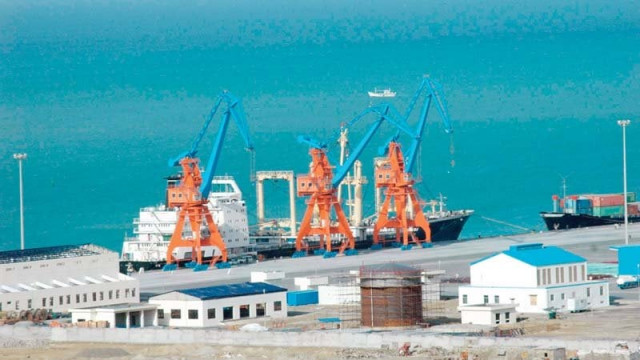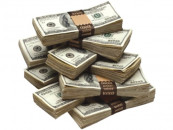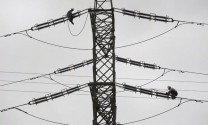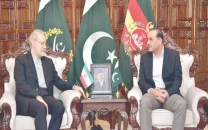CPEC offers vast opportunities to tap into the Chinese economy
Pakistan can draw several advantages including converting intermediate goods into consumer goods within the country

CPEC can help expand trading relationships for Pakistani producers across several countries. China exported more than 14% of the total global value in 2015. PHOTO: FILE
It certainly benefits China as the road and rail networks circumvent the alternative maritime routes through the South China Sea. It shortens the transit from China to several Middle Eastern, African and European countries.
China's economy 'integrated' with global economy

Although the infrastructural development may have several benefits to the local economy within Pakistan, the Pakistani policymakers must adopt viable industrial and trade policies to reap benefits from CPEC in the long-run.
Trade advantage
China exported more than $2.28 trillion and imported more than $1.68 trillion in 2015. A large percentage of its imports are natural resources. As CPEC is likely to play an instrumental role in transporting the goods to China from the resource rich Middle East and Africa, Pakistan must tap into the potential flow of natural resources for its own industrial usage.
China imported $300 billion worth of mineral products in 2015. Approximately, 30% of it was from the Gulf Cooperation Council (GCC) member states in the Middle East and from countries in Africa, regions which are likely to be connected to China through Gwadar.
Additionally, China imported more than $12 billion of organic chemicals, such as acyclic alcohols and cyclic hydrocarbons, as well as plastics and its articles from the GCC member states and imported more than $20 billion worth of iron and steel, ores (such as iron, copper, manganese and chromium), natural pearls and copper from Africa.
The Pakistani economy can benefit immensely if a certain proportion of mineral products and other raw materials and intermediate goods from the Middle East and Africa are converted to finished products within Pakistan and transported through the road and rail networks developed under CPEC to China in the form of finished goods.
This will also help create much needed employment within the country. CPEC can help expand trading relationships for Pakistani producers across several countries. China exported more than 14% of the total global value in 2015. It exported $700 billion more than the exports from the US and $900 billion more than the exports from Germany.
Several Chinese firms have developed production linkages across the globe. Such networking may help create additional linkages for Pakistani producers as well.
Relying on the Chinese support
Chinese goods
As the transportation network under CPEC is completed, it will further the influx of Chinese goods into Pakistan.
More than 42% of the total global exports from China in 2015 were in machinery and mechanical appliances, followed by 12% in textiles, 8% in base metals and 5% in products of chemical or allied industries.
On the other hand, almost a quarter of the total global imports into Pakistan were in mineral products, followed by 18% in machinery and mechanical appliances, 13% in products of chemical or allied industries and 9% in base metals.
Under the free trade agreement signed between Pakistan and China in 2007, imports of Chinese goods into Pakistan have received preferential treatment.
The preferential trade-weighted average tariff rates are significantly lower than the non-preferential MFN (most-favored nation) rates offered to World Trade Organization member countries that do not receive preferential treatment on trading with Pakistan.
For instance, the weighted average preferential tariff rates, calculated using data from World Integrated Trade Solutions (WITS), on the imports of machinery and mechanical appliances from China are almost half the MFN rates. Similar concessions are available on the imports of products of chemical or allied industries, base metals, and articles of stone, plaster and cement.
Trade between countries can also be analysed in terms of their product classifications, such as capital goods, consumer goods, intermediate goods and raw materials. Capital goods are used in the production of other goods and services, while intermediate goods and raw materials need further processing before being sold as consumer goods.
More specifically, Pakistan imports mainly intermediate goods of base metals from China. The same can be said for the imports of textile products and of chemicals and its allied products.
The conversion of intermediate goods into consumer goods within Pakistan is likely to boost the local economy. Therefore, the government must ensure that value addition occurs within Pakistan, even if it is a small percentage, for goods transported through Pakistan under the CPEC scheme.
A push for value addition within Pakistan will not only lead to employment generation but also improve export diversification as it may increase the range of finished goods in the export basket.
The writer is an Assistant Professor of Economics & Research Fellow at CBER, IBA
Published in The Express Tribune, January 23rd, 2017.
Like Business on Facebook, follow @TribuneBiz on Twitter to stay informed and join in the conversation.



















COMMENTS
Comments are moderated and generally will be posted if they are on-topic and not abusive.
For more information, please see our Comments FAQ